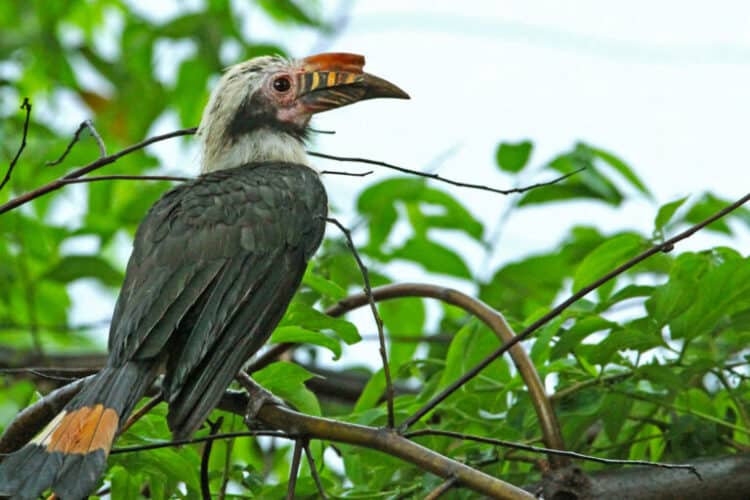Birds are hugely popular pets in Indonesia. A 2011 study found, for instance, that more than one-third of households in the six biggest cities of Java and Bali kept birds as pets. Most of these pet birds are caught from the wild.

The shama’s popularity in bird singing competitions in Java, resulted in a “dramatic” rise in the caging of the bird between 1996 and 2006, the study says. In 2006 alone, more than 120,000 white-ruped shama were estimated to be captive in six cities on Java and Bali. Rising demand for this species, combined with the ease of trapping it, has caused widespread local extinctions of its populations across Indonesia, the authors write.

Pet trade threatens several other species of birds, including the silvery wood pigeon, yellow-crested cockatoo, scarlet-breasted lorikeet, black-winged myna, Bali myna, straw-headed bulbul, Javan white-eye, rufous-fronted laughing thrush, Sumatran laughing thrush and the Javan sparrow.
The critically endangered helmeted hornbill is also at risk of extinction, but it faces threats of a different kind. The bird is highly prized among hunters for its casque (solid helmet-like structure on its bill), which isused by the Chinese as a substitute for elephant ivory. According to BirdLife, as many as 500 birds were being killed every month in 2013, in West Kalimantan, resulting in an annual loss of 6,000 individuals.
Other than decimating wild populations, bird trade can also result in genetic contamination, the study warns. Sometimes, “exotic” species — birds imported to areas in which they are not native — can accidentally escape or are deliberately released. These birds can then out compete the native species and put their populations at risk, the authors write.
For example, various species of Acridotheres myna have been imported into Java and escaped, the study notes, “putting great pressure on whatever native populations remain of the endemic (but itself elsewhere exotic) Javan or White-vented Myna”.
The disappearance of a bird species due to trade can also have a knock-on effect on other species.
“When popular birds become scarce and too expensive, trappers and traders look for the next-best and more readily available species, such as Grey-cheeked Bulbul substituting for Straw-headed Bulbul in West Kalimantan,” the authors write.
To avoid the impending extinction of the birds listed in the study, the authors recommend improving law enforcement, increasing public awareness, in-situ management of populations, and commercial breeding. Sometimes, bird trappers in Indonesia have been converted into full-time guides for birdwatching tourists, resulting in a “higher, more reliable income, easier, more sustainable life-style and a genuine interest in conservation.” Such a tactic could work in some cases, the study suggests.
But governments and even conservation organizations often don’t view this issue as a high priority, Shepherd said, despite the scale and consequences of the bird trade. “This hampers efforts to prevent further losses.”
Citation:
- Eaton JA, et al. (2016) Trade-driven extinctions and near-extinctions of avian taxa in Sundaic Indonesia. Forktail 31 (2015): 1–12
This article was first published by Mongabay.com on 27 May 2016.






Leave a Reply